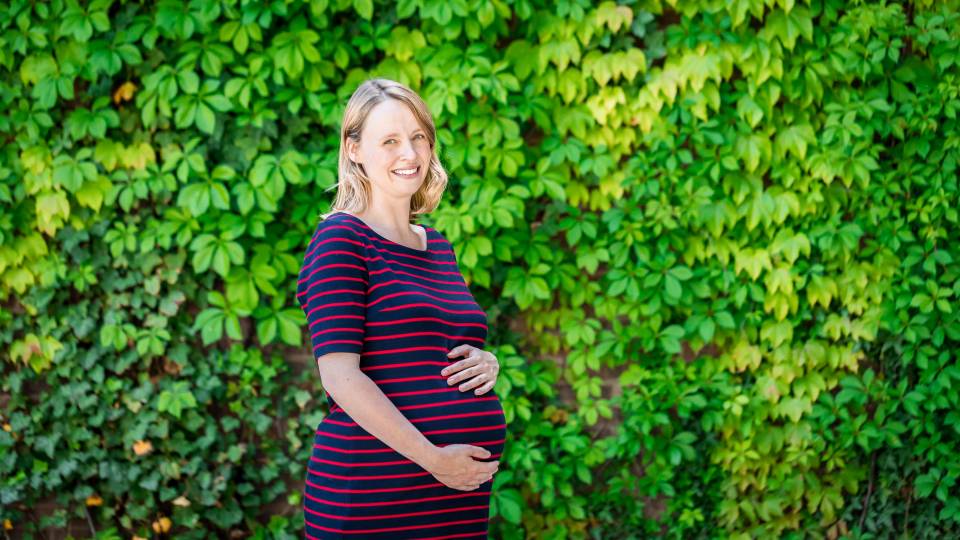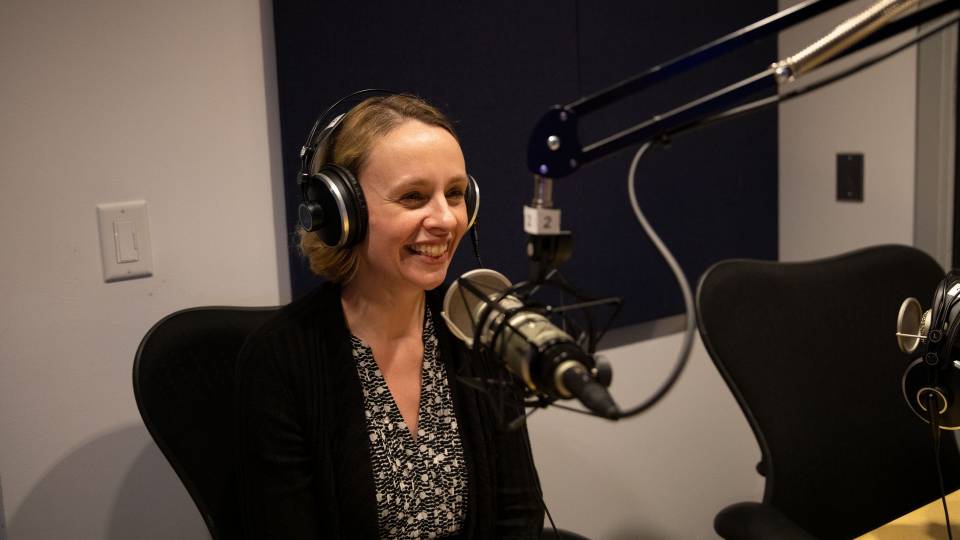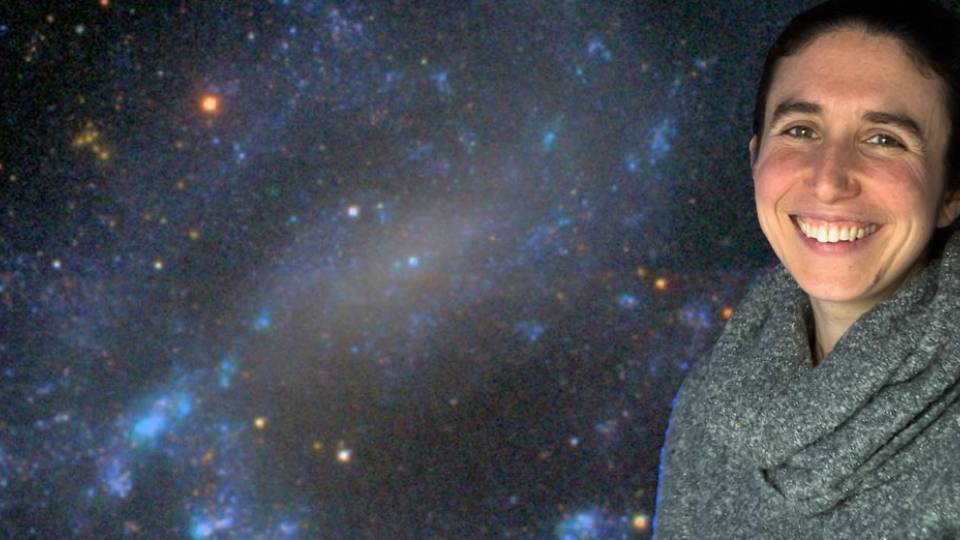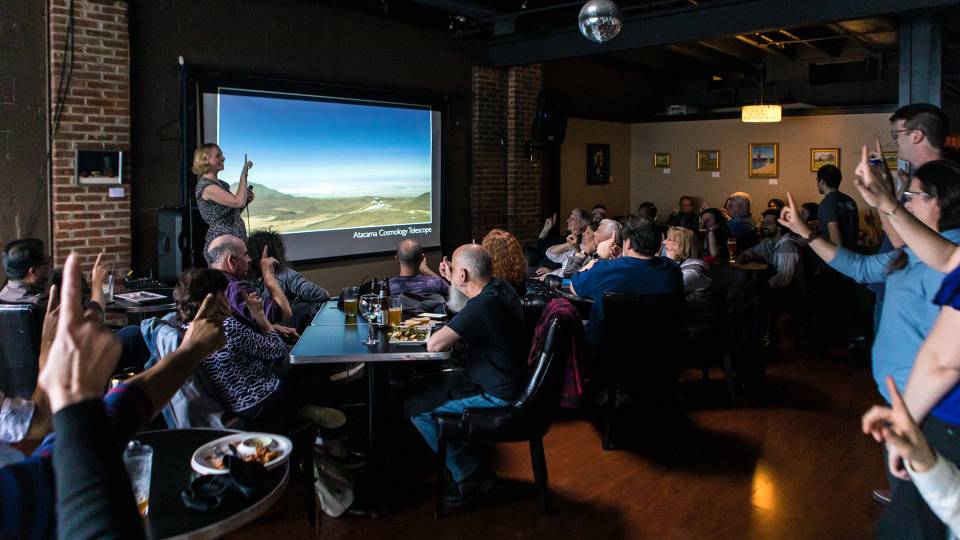Jo Dunkley
Jo Dunkley, a professor of physics and astrophysical sciences, wants to share her delight in the wonders of the universe.
In her new book, “Our Universe: An Astronomer's Guide,” published this month by Harvard University Press, she takes readers on a walk through our astronomical neighborhood and introduces concepts from relativity to the origin and expansion of the universe in clear, exceptionally readable language.

Dunkley has been awarded the Maxwell Medal, Fowler Award and the Royal Society Rosalind Franklin Award for her work on the cosmic microwave background. She shared the Gruber Prize and the Breakthrough Prize with the WMAP team. She was recently granted the rank of Officer of the Most Excellent Order of the British Empire (OBE). Her current work includes analyzing data from observations using the Atacama Cosmology Telescope and the upcoming Simons Observatory.
What prompted you to write ‘Our Universe’?
Ever since I started doing research, I have loved explaining my science to the general public. As an astronomer and physicist, I get to find out so many exciting things about this larger home that we live in, and I wanted to share what we know and how we know it. Many of the ideas for the book actually came from a course on astronomy for science teachers that I co-taught when I was a postdoc at Princeton 10 years ago. It was organized by the Teacher Prep program, and it put me in close contact with teachers and educators. I learned a huge amount from them.
What do you think is the most common public misperception about our universe? How did you tackle that?
To me, the most common misperception is that the universe is too hard to understand, too big to fathom. I tried to break this down by starting in a familiar place, with the moon and our sun and our home in the solar system, and only gradually working outwards to the far reaches of the universe. I show how we fit in to the bigger picture, and try to get around the enormous distances by scaling things down to sizes that people can visualize more easily. Throughout the book I try to use analogies to help make things more accessible.
You include many wonderful stories about how discoveries were made, including the often-overlooked roles played by women. Can you share one of your favorites?
A story I find particularly captivating is of the incredible expeditions made in the 1760s to measure the two transits of Venus across the sun. Inspired by Edmund Halley, astronomers knew this was the key to measuring the distance to the sun and the size of our solar system. It was the first real international astronomy collaboration, with people setting off around the globe with telescopes and pendulum clocks, to measure and time the transits. The conditions were often really terrible — some traveled for months or years, others got caught up in wars and pirate attacks, many were thwarted by bad weather. But they made the measurements, and it worked. I love their ambition, and also how closely in some ways their story mirrors our experience today of doing astronomy. We work in big teams to go to places like the South Pole and desert mountaintops in Chile, and even send telescopes into space, to make the best measurements we can.
When did you first fall in love with space?
I have always loved mathematics, but I fell in love with space and physics when I went to college. In my first year at Cambridge we learned about Einstein’s theory of special relativity, and I first discovered that time and space could behave in a really fascinating and unexpected way.
And then after my degree I went backpacking across South America. I hadn’t been sure what career to pursue, but it was reading popular science books, and looking at the stars from the Atacama Desert (which coincidentally is where the telescope I now use is), that helped convince me to take astronomy and physics further.
Very few world-class researchers also write for general audiences. Why have you chosen to be both a scientist and a science storyteller?
I feel like they are naturally connected. The science we find out is only impactful if we share it, and I think that in doing science we are always telling a story on some level. We are asking questions, and discovering the answers to them, and explaining why they matter. So as researchers we do get to write all the time, for journal articles and grant proposals, but there is limited room in those for creativity. I love to write, so it was a pleasure for me to be able to just focus on the writing itself, and to have readers in mind who did not have any specialized knowledge. It is hard to find the time to do both though, especially while looking after young kids! I had to carve out special time every day to write, and do it in a place where I wasn’t also trying to think about my “regular” job.
“Our Universe: An Astronomer's Guide” by Jo Dunkley was published by The Belknap Press of Harvard University Press on April 8.







